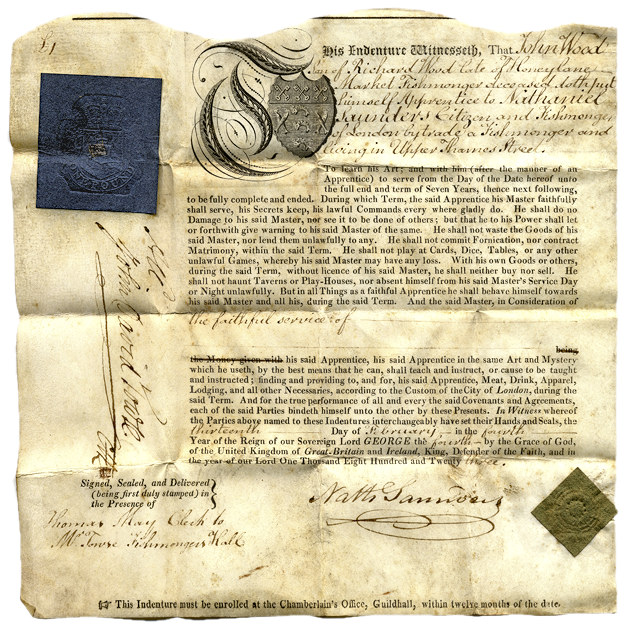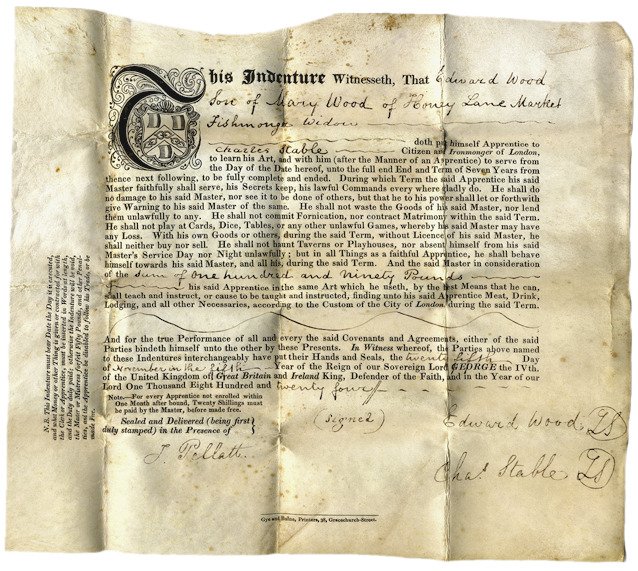 |
|
| News About Us Membership Events Links |
|
Apprenticeship IndentureThese documents were essential to vocational training in England from the medieval period through the 19th century. Apprentice indentures were legal contracts outlining the terms and conditions under which a young person, usually a minor, would be apprenticed to a master. Typically, a sum of money was paid by the parent or guardian to the master, who, in exchange, agreed to provide the apprentice with the tools and knowledge needed to become proficient in the trade or profession. The master was also responsible for providing appropriate food, clothing, and lodging for the duration of the apprenticeship, which generally lasted seven years. The terms of the contract were often specific, stipulating the apprentice’s behaviour, living conditions, and even moral conduct. The indenture was printed in duplicate on a single sheet of paper and separated by an irregular cut, with the matching edges serving as a physical verification of authenticity for both parties.
For trades like ironmongery, an apprenticeship involved learning the skills necessary to work with iron and other metals, such as forging, shaping, and selling metal goods. Ironmongers often engaged in both the production and retail of hardware, making the trade a respected and essential part of urban and rural economies. This document not only reflects the personal history of the apprentice, capturing the journey of a young person bound to a trade, but also highlights the role of apprenticeship in the social and economic fabric of the time. Through the lens of this indenture, we gain a glimpse into the responsibilities, expectations, and relationships that defined working-class life and shaped communities during a transformative period in English history.
|
|
|
Home | News | About Us | Membership | Events | Links | Contact | Item of the month | Articles |
| Copyright © The Ephemera Society 2025. All Rights Reserved. |

